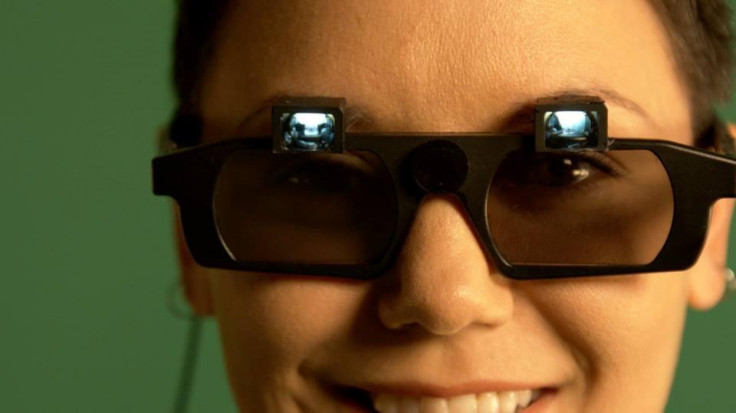castAR Kickstarter: Projected Augmented Reality System Raises Close To $300,000 In One Day
A "projected augmented reality system" may seem like a bunch of futuristic lingo thrown together, but the basic concept involves playing 3D games with the ability to manipulate the game using different devices. Technical Illusions has launched a Kickstarter for the castAR, and more than 1,000 people have already donated to the project.

The duo, Jeri Ellsworth and Rick Johnson, behind castAR have an easy way to explain it. Remember the scene in "Star Wars: Episode IV - A New Hope" where R2D2 and Chewbacca are playing a holographic 3D-game? CastAR is attempting to make that a reality. Interactive experiences have become incredibly popular, including 3D movies as well as the development of Oculus Rift, a virtual reality gaming headset, and castAR is attempting to create that feeling of being within the game while avoiding some of the pitfalls associated with VR systems.
The castAR Kickstarter was launched on Oct. 14 and has already raised more than $280,000, with a goal of $400,000. The Kickstarter project ends on Nov. 14, and it seems likely it will surpass the original goal. The system being developed by Technical Illusions requires a pair of glasses and a surface. A pair of projectors, one for each eye, is attached to the frame of the glasses to create an image on a surface with built-in markers. Players will see a 3D hologram of a selected game and can use different devices, such as a wand, to interact with the game. As noted by Phys.Org, a player can move the head to view the game at a different angle and castAR adjusts this perspective based on orientation.
A camera, found between the two projectors, uses these markers to identify a player's location, head movement and orientation. According to the developers, the surface is made of "retro-reflective sheeting material," the same material that reflects light in traffic signs, which allows multiple players to use the surface. The individual view of each player is kept private, important for any game, but the main advantage of castAR could be its comfort. Other virtual reality systems, or 3D glasses, can lead to eye strain or give users a sense of nausea, but Ellsworth and Johnson say the system projects the image at a far enough distance to prevent eyestrain and the glasses let users see the world around them, which reduces the feeling of motion sickness or nausea.
CastAR is also developing accessories that will expand gameplay options. A RFID, radio-frequency identification, grid can be placed under the mat and pieces, with RFID bases, can be used to further interact with games. The wand can be used to move objects and includes a built-in joystick. Technical Illusions is also developing an augmented reality, AR, and virtual reality, VR, clip-on that can be attached to the glasses. Switching to AR will eliminate the need for a surface, while the VR feature will create an immersive environment.
The starter package, which includes the glasses and surface, measuring 1 meter by 1 meter, costs $189. The pro package, with the glasses, the large surface, 1 meter by 2 meters, the wand and the AR and VR clip-on, costs $285. The Kickstarter project has rewards for pledges ranging from $1 to $10,000. A video of castAR in action can be viewed below.
© Copyright IBTimes 2024. All rights reserved.








